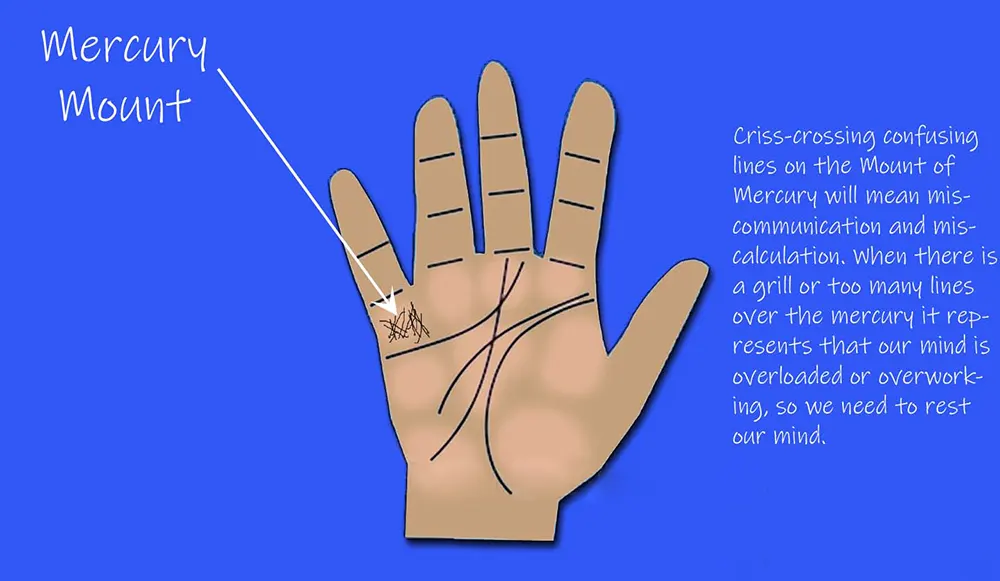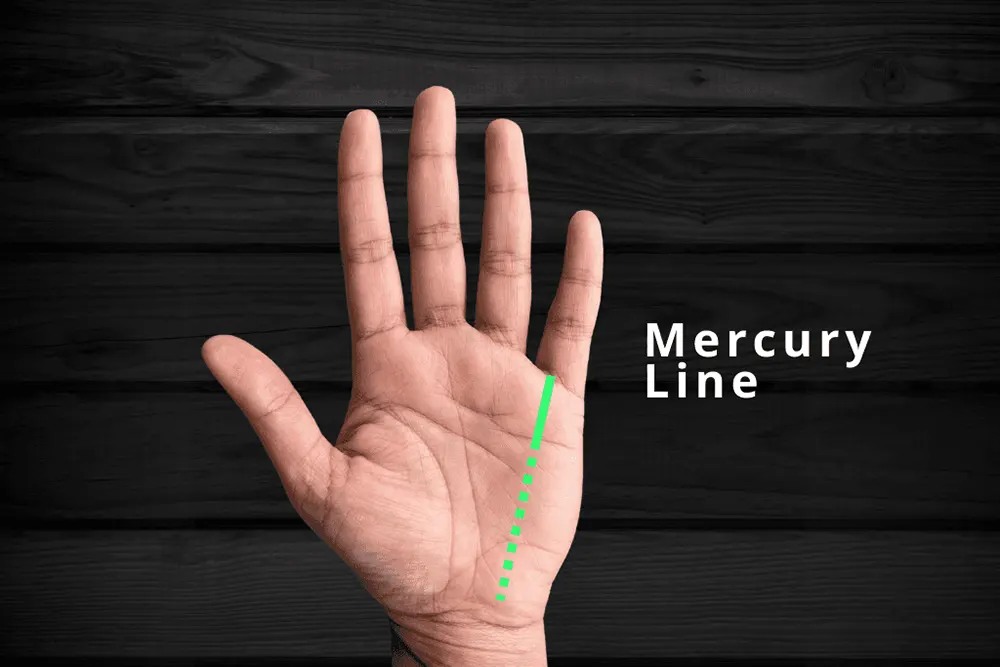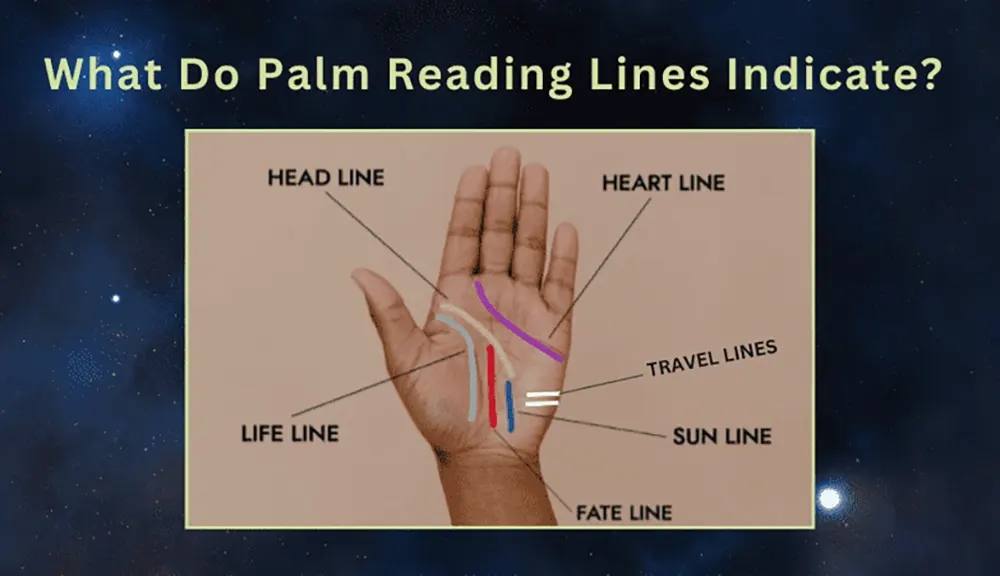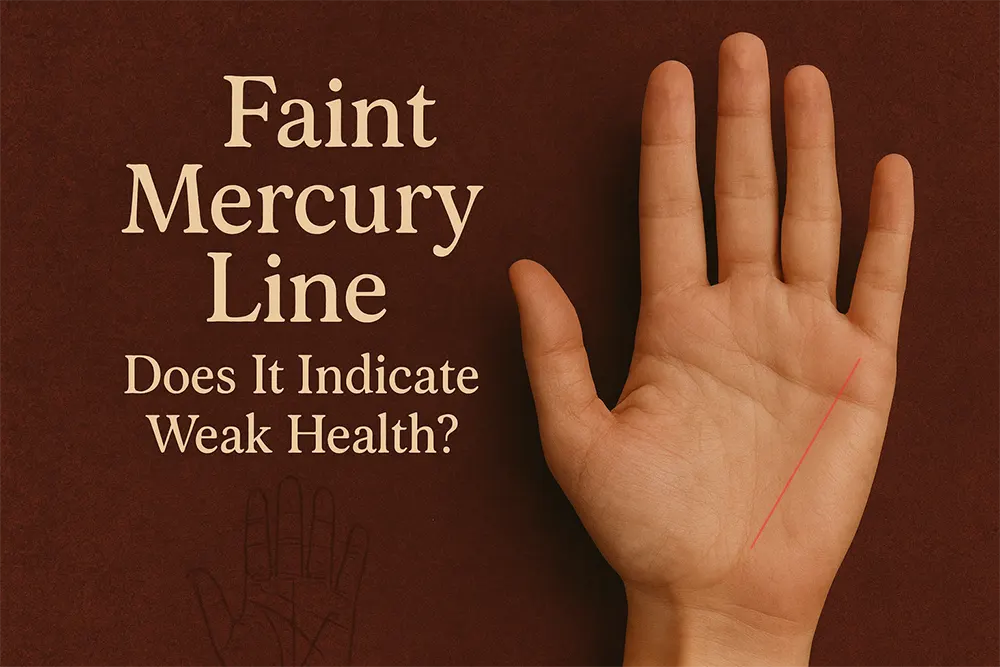In the ancient art of palmistry, our hands are seen as maps of our lives, revealing insights into personality, destiny, and even health. Among the many lines etched into our palms, the Mercury line stands out as a fascinating indicator of communication skills, business acumen, and overall well-being. But what happens when this line appears faint or barely visible? Does a faint Mercury line truly signal weak health, or is there more to the story? In this comprehensive guide, we’ll dive deep into the world of palmistry, exploring the Mercury line’s significance, its variations, and whether a faint appearance should cause concern. Whether you’re a seasoned palm reader or a curious beginner, understanding the faint Mercury line can offer valuable perspectives on your life’s path.
Palmistry, also known as chiromancy, has roots stretching back thousands of years across cultures from India and China to ancient Greece and Egypt. It’s not just about predicting the future; it’s a tool for self-reflection and personal growth. The Mercury line, often referred to as the health line or line of Mercury (named after the Roman god of communication and commerce), typically runs from the base of the palm near the wrist, upward toward the little finger. A strong, clear Mercury line is associated with robust health, sharp intellect, and success in endeavors requiring wit and negotiation. Conversely, a faint Mercury line might suggest challenges, but it’s essential to interpret it within the broader context of the hand’s features.
As we explore this topic, we’ll address common misconceptions and provide practical tips for reading your own palm. By the end, you’ll have a clearer understanding of whether a faint Mercury line indicates weak health or if it’s simply a nuance in your unique palm story.
The Basics of Palmistry: Understanding Your Hand’s Map
Before delving into the specifics of the Mercury line, it’s crucial to grasp the fundamentals of palmistry. Your palm is divided into mounts (fleshy pads) and lines, each representing different aspects of life. The major lines include the heart line (emotions), head line (intellect), life line (vitality), and fate line (career path). Minor lines, like the Mercury line, add layers of detail.
In palmistry, the dominant hand reflects your current life path and choices, while the non-dominant hand shows innate potential. Always examine both for a complete picture. Lighting, hand position, and even skin texture can influence readings, so approach with an open mind.
The Mercury line’s position is key: it often starts near the life line or from the mount of Luna (the lower part of the palm opposite the thumb) and ascends toward the mount of Mercury at the base of the pinky finger. Its presence isn’t universal—some people lack it entirely, which doesn’t necessarily mean poor health but might indicate a life less focused on mercurial traits like business or communication.

Historically, palmistry evolved from Vedic astrology in India, where lines like the Budh Rekha (Mercury line in Hindi) were linked to planetary influences. Mercury, or Budh, governs intelligence and health, particularly digestive and nervous systems. A faint line here could historically be seen as a sign of imbalance in these areas, but modern interpretations blend tradition with psychology, viewing it as a prompt for self-care rather than doom.
What Is the Mercury Line and Its Core Meanings?
The Mercury line is one of the secondary lines in palmistry, not always present but highly informative when it is. It’s primarily associated with health, communication, and commercial success. A deep, unbroken line suggests excellent vitality, persuasive skills, and a knack for business dealings. People with prominent Mercury lines often excel in fields like sales, writing, or entrepreneurship.
In terms of health, the line is believed to reflect the body’s resilience, especially regarding the liver, intestines, and nervous system. Ancient texts, such as those from Chinese palmistry, link it to longevity and disease resistance. For instance, a straight, clear line might indicate a strong constitution, while variations could point to potential vulnerabilities.
But what about a faint Mercury line? A faint appearance doesn’t automatically mean weak health. It could signify underdeveloped communication abilities, shyness in social settings, or intermittent health issues that are manageable. In some readings, faintness suggests that health concerns are not dominant in one’s life path, or that the individual relies more on other strengths.
From a psychological angle, palmistry enthusiasts argue that lines change over time with lifestyle adjustments. A faint Mercury line might encourage someone to focus on improving diet, exercise, or stress management to “strengthen” it metaphorically. This perspective aligns with views that a well-defined line promotes good health, while faintness may hint at expression difficulties.
Interpreting a Faint Mercury Line: Health Implications Explored
Now, to the heart of the matter: does a faint Mercury line indicate weak health? The short answer is not necessarily, but it can be a subtle warning sign depending on other factors.
In traditional palmistry, a faint or weak Mercury line is often linked to digestive problems, anxiety, or low energy levels. For example, if the line is pale and barely etched, it might suggest a predisposition to illnesses related to Mercury’s domain, such as gastrointestinal disorders or mental fog. However, this isn’t a diagnosis—palmistry is interpretive, not medical.
Consider variations: A faint line that branches or intersects with the head line could indicate intellectual burnout or stress-related health issues. If it’s faint but long, it might mean health improves with age. Short and faint? Potential early-life challenges that resolve through personal development.
Real-world examples abound. Many successful individuals have faint Mercury lines yet thrive by compensating with strong head or fate lines. Think of introverted geniuses who channel energy inwardly rather than through overt communication.

It’s vital to cross-reference with other palm features. A robust life line might offset a faint Mercury line, suggesting overall good health despite minor weaknesses. Mounts play a role too—the mount of Mercury being firm and prominent can enhance a faint line’s positive aspects.
In modern palmistry, influenced by holistic health practices, a faint line is seen as an invitation to nurture oneself. Practices like yoga, meditation, or herbal remedies aligned with Mercury (e.g., foods for liver health) are recommended to potentially deepen the line over time.
Factors Influencing the Mercury Line’s Appearance
The appearance of the Mercury line isn’t static; it’s influenced by genetics, lifestyle, and even environmental factors. Age is a big one—lines often deepen with maturity, so a faint Mercury line in youth might strengthen later.
Hand type matters: Earth hands (square palms, short fingers) might show sturdier lines, while air hands (square palms, long fingers) could have finer, fainter ones naturally linked to intellectual pursuits rather than physical health.
Lifestyle impacts: Poor diet, stress, or sedentary habits can “weaken” lines visually. Conversely, active communication training or health regimens might enhance them.
Cultural differences in interpretation exist. In Indian palmistry, a faint Budh Rekha might prompt astrological remedies like wearing emerald (Mercury’s gem). In Western traditions, it’s more about psychological insights. A short or faint line may indicate communication challenges, but not inevitably poor health.
Common Variations of the Mercury Line and Their Meanings
Beyond faintness, the Mercury line can appear broken, chained, wavy, or forked, each adding nuance.
- Broken Mercury Line: Suggests interruptions in health or career, like periods of illness or job changes. If faint and broken, it might point to recurring minor ailments.
- Chained Appearance: Indicates ongoing health fluctuations, perhaps digestive sensitivities. Faint chaining could mean subtle, unmanaged stress.
- Wavy Line: Implies inconsistency in communication or health, like mood swings or irregular habits.
- Forked End: Positive for business acumen, even if faint, suggesting multiple income streams despite health hurdles.
- Absent Mercury Line: Not uncommon and often means health isn’t a focal issue; other lines compensate.
How to Read Your Own Mercury Line: Step-by-Step Guide
Ready to examine your palm? Follow these steps:
- Prepare Your Hand: Wash and dry your hands. Sit in good lighting, relax your palm naturally.
- Locate the Line: Look for a vertical or slanted line from the wrist area toward the pinky base.
- Assess Visibility: Is it faint? Compare depth to other lines.
- Note Length and Shape: Long and faint might mean gradual improvement; short and faint, early focus needed.
- Check Intersections: Does it cross the head or heart line? This could amplify health implications.
- Consider Both Hands: Differences show evolution.
- Journal Your Findings: Track changes over months.
Remember, self-reading is for insight, not alarm. Consult professionals for deeper analysis.
Debunking Myths About the Faint Mercury Line and Health
Myth 1: A faint Mercury line always means chronic illness. Reality: It’s often about balance, not inevitability.
Myth 2: Lines are fixed fate. Reality: They evolve with life choices.
Myth 3: Absent line equals no health issues. Reality: It might mean health is secondary to other life aspects. No health line can actually indicate no major problems.
Integrating Palmistry with Modern Health Practices
Palmistry complements, not replaces, medical advice. If a faint Mercury line concerns you, pair it with check-ups. Focus on Mercury-related health: liver detox, mental clarity exercises, communication therapy.
Holistic approaches like acupuncture or Reiki might “energize” the line’s domain.
Case Studies: Real-Life Palm Readings Involving Faint Mercury Lines
Case 1: A 35-year-old entrepreneur with a faint, wavy Mercury line struggled with public speaking but had stellar business success via written communication. Health-wise, minor digestive issues resolved with diet changes.
Case 2: A teacher with a faint, broken line experienced anxiety but strengthened it through mindfulness, noting visual deepening over years.
These anecdotes show faint lines as guides, not sentences.

The Role of Mercury in Astrology and Palmistry Synergy
Mercury’s planetary influence ties palmistry to astrology. A faint line might correlate with weak Mercury in a birth chart, suggesting remedies like chanting mantras or wearing yellow.
Advanced Palmistry Techniques for Mercury Line Analysis
For experts: Use magnification for faint lines. Compare with fingerprints (whorls on Mercury finger indicate strong traits). Timing: Divide the line into segments for life phases.
Cultural Perspectives on the Mercury Line
In Chinese palmistry, it’s the liver line, focusing on organ health. In Gypsy traditions, faintness warns of deceit in business. Illuminates communication, intellect, and health.
Frequently Asked Questions (FAQs)
What does a faint Mercury line really mean in terms of health?
A faint Mercury line may suggest potential vulnerabilities in health, particularly digestive or nervous systems, but it’s not definitive. It often encourages proactive self-care rather than indicating inevitable weakness.
Can a faint Mercury line change over time?
Yes, lines can deepen with positive lifestyle changes like better nutrition, stress reduction, and communication practice.
Is the Mercury line the same as the health line?
Yes, it’s commonly called the health line in many traditions, reflecting overall well-being alongside communication skills.
What if I don’t have a Mercury line at all?
An absent line often means health isn’t a primary life theme or that you have a strong constitution without notable issues.
How does a faint Mercury line affect career or relationships?
It might indicate challenges in expressing ideas, potentially impacting negotiations or social bonds, but strong other lines can compensate.
Should I worry if my child’s palm has a faint Mercury line?
Children’s lines develop over time; faintness is common and often strengthens. Focus on nurturing their health and skills. A faint or broken line may suggest susceptibility to illnesses.
Conclusion: Embracing the Insights of Your Palm
In conclusion, a faint Mercury line does not unequivocally indicate weak health—it’s a nuanced signal calling for awareness and balance in communication, intellect, and well-being. Palmistry teaches us that our hands are dynamic reflections of our journeys, offering guidance to navigate life’s complexities. Rather than fear a faint line, view it as an opportunity for growth: enhance your health routines, hone your speaking skills, and trust in your resilience. Whether through ancient wisdom or modern self-improvement, understanding your Mercury line can lead to a more empowered, harmonious life. Remember, the true power lies not in the lines themselves, but in how we respond to their messages. Explore your palm today, and unlock the secrets it holds for a brighter tomorrow.

Related Posts
Double Fate Line – Dual Careers Explained: Unlocking the Secrets of Your Palm in Palmistry
November 2025 Horoscope: Career Boost for Earth Signs – Taurus, Virgo, Capricorn
Case Studies: Famous Leaders Head Lines
Head Line Forks in Palmistry: Decoding the Writer’s Fork and Lawyer’s Fork for Intellectual Insights
Broken or Fragmented Head Line in Palmistry: Mental Struggles?
Cultural Symbolism of the Heart Line Across Traditions